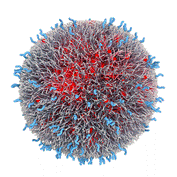Center, Biotechnology

Nebraska Center for Biotechnology: Faculty and Staff Publications
Document Type
Article
Date of this Version
9-2014
Citation
Published in final edited form as: Virology. 2014 September ; 464-465: 406–414. doi:10.1016/j.virol.2014.07.010
PMCID: PMC4808581
Abstract
To deepen our understanding of early rectal transmission of HIV-1, we studied virus-host interactions in the rectal mucosa using simian immunodeficiency virus (SIV)-Indian rhesus macaque model and mRNA deep sequencing. We found that rectal mucosa actively responded to SIV as early as 3 days post-rectal inoculation (dpi) and mobilized more robust responses at 6 and 10 dpi. Our results suggests that the failure of the host to contain virus replication at the portal of entry is attributable to both a high-level expression of lymphocyte chemoattractant, proinflammatory and immune activation genes, which can recruit and activate viral susceptible target cells into mucosa; and a high-level expression of SIV accessory genes, which are known to be able to counter and evade host restriction factors and innate immune responses. This study provides new insights into the mechanism of rectal transmission.


Comments
Copyright 2014 Elsevier. Used by permission.